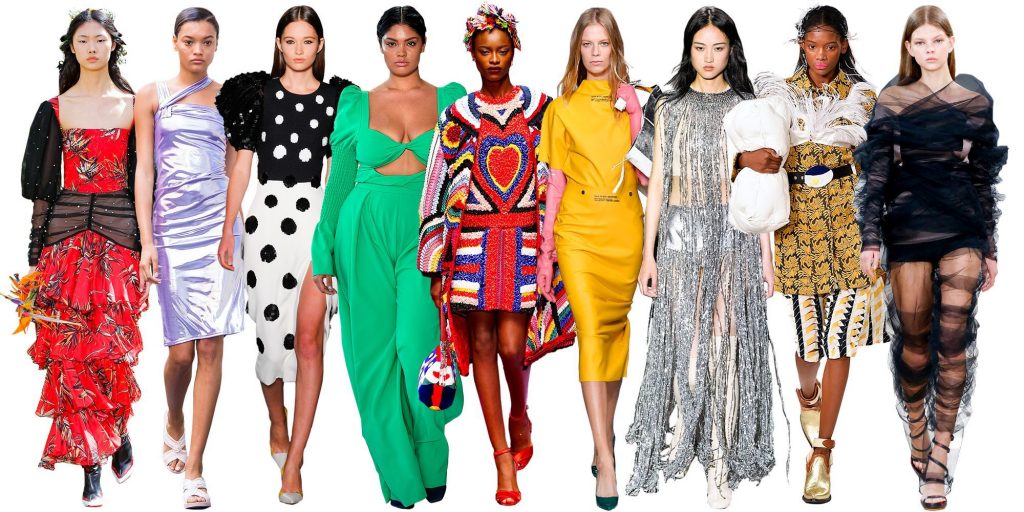
For years now, South Africa’s local fashion industry has been steadily trudging along. Many production and economic challenges face both local brands and designers but, the closest to their bottom line, are inexpensive imports. Asia’s strong hold over the local fashion industry has been on a dizzying spike since its inception. With a projected market volume of US$284,311m in 2020, most revenue is generated in China (Statista, 2020). Revenue in the Fashion segment is projected to reach US$1,258m in 2020 (Statista, 2020) – in South Africa. We must ask ourselves: how much of that US$284,311m, is contributed by South Africa?
Year on year, SA Fashion Week and Mercedes Benz Fashion Week runways, have been dressed with the who’s who and who’s next of the local fashion-scape. Although, this is a beautiful display of our talented designers, little of those pieces have trickled down to the average consumer. Even nudges in the right direction from retailers, such as the Edgars X SAFW Capsule Collections or The Space, and their unwavered offering of local garments, have not been enough to sway the larger population. Impactful, yes, but the average Joe and Jane are still not buying local – for now.
Primed for Change
The data and even the air we breathe is heavy with the message that eCommerce is on a massive projectory – particularly in SA. Revenue in the eCommerce market is projected to reach US$4,057m in 2020 (Statista, 2020). With a sizeable part of that pie baked by the fashion industry. The market’s largest segment is Fashion with a projected market volume of US$1,258m in 2020 (Statista, 2020). Previous retail channels used by the average South African consumer, were limiting and often lead them back to traditional brick and mortar. However, with the ‘great eCommerce restructure’, the illusory wool was lifted from their eyes. With it, came a progressive shift in their perception of the marketplace.
Statista, August 2020
Related Post:
- Fundi Zwane launches her debut fragrance range, CAMAGU
- Trace X Gauteng Film Commission Filmmakers Competition Back For Fourth Edition
- Comfort Yummy For The Tummy
So Where does that Leave Local Fashion?
We have seen a number of local brands (and when I say number, I pretty much mean all of them) supporting and collaborating with one another in order to ‘combat Covid’, grow their ethical and sustainable practices and most importantly – change consumer perception. Consumer behaviour is shifting at a rapid pace. Fast Fashion (although still a major player), may just need to watch its back, as consumers become more ‘woke’ to the dark realities of the fashion underworld. Zoom in on the social playgrounds, and you will quickly realise that environmental and socio-economic philosophies, rule the yard. Producing the unavoidable ‘bubble up’ – so much so – that larger brands are lending a pricked ear.
Knowing who made your clothes and understanding the ethical inner workings of the brands you support, is swiftly becoming the new black. It is as though an investigative journalism light went off in the buyer’s mind over the lockdown period, and now knowledge, is affirmatively power.
But is the Price Right?
The lag on the average South African’s finger click, is still money. Especially now. But what we are seeing more and more of, is the justification of higher priced purchases, in relation to their broader value. One of the reasons for this is that online shops often promote an incentive of “free delivery” if shoppers spend over a certain amount. Also, more people are feeling confident to purchase more expensive, larger items online (Flicker Leap, 2020). Consumers also seem to be evaluating their entire shopping experience. From the product and its longevity, to the brand and its virtue, all the way through to methods and platforms. What we may see is longer lead cycles for decision making on purchases, as the consumer deliberates on which rudiments they consider to be most valuable.
The Opportunity for Businesses
Attention to the game of South African politics and the compulsory participation on the economical balancing beam, has SME’s shook. We do not have to look twice to see that small businesses are the life blood of the South African economy. The time for pivotal decision making, for businesses and consumers alike – is here. Business models must be pandemic-proof and adaptable, in preparation for an intuitive future.
The Rise of Fashion Friendly Innovators
Let’s face it. The game changed. In fact, it was completely altered. We were handed this weird Jumanji-looking trunk, with lost players and missing instructions. Those who were disconnected – scrambled. But those who were plugged in and had their finger on the digital pulse – were right where they needed to be.
We have seen innovative Apps like Yaga (a trading place for pre-loved pieces) enter the fashion-sphere with a bang. Or take Style Rotate, a luxury fashion rental agency (birthed by Ex Cosmopolitan Fashion Editor, Cleo Marcopoulos) that is changing the way consumers see luxury garments. All in the name of sustainable style. The latest domain entrant or rather their most recent progression, is from fashion publication – Fashion Handbook SA with the launch of their online Designer Directory. The directory is essentially a comprehensive list of local fashion brands and businesses. It helps consumers to discover local fashion in one user-friendly space. Publisher and Founder of the publication, Leanne Tlhogoane, says ‘The initiative intends to help build a stronger fashion Eco-system by connecting businesses and consumers’.
The Bottom Line
The fact of the matter is that consumer behaviour dictates production. More demand for local, ethical, and sustainable goods, leads us to more supplied commodities. It is about making better business decisions and creating a healthier fashion Eco-system. One in which the industry can tick all those nice boxes and let us not forget – be profitable.



























